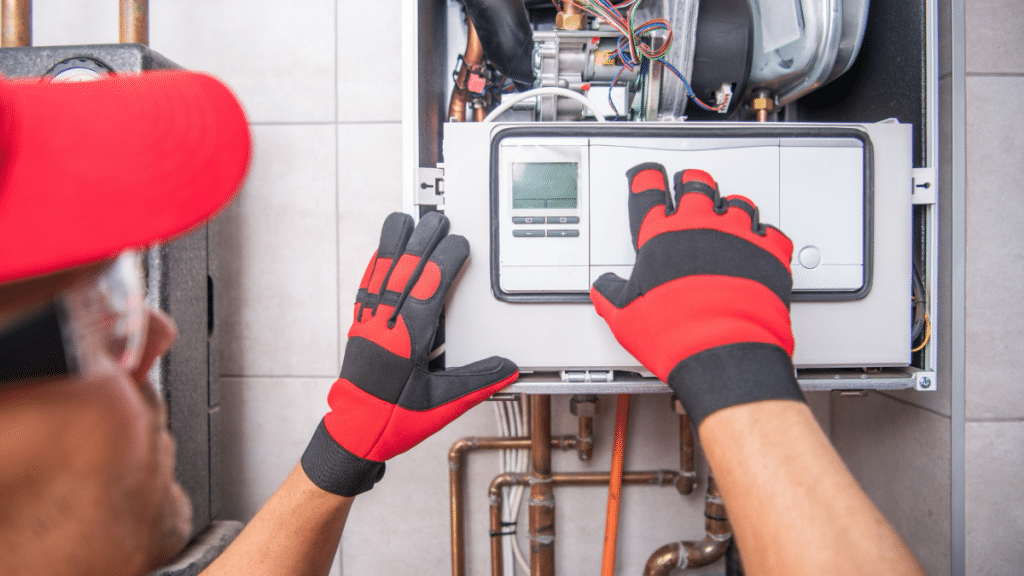Furnaces are essential for keeping our homes warm during the colder months, but what happens when your furnace starts leaving soot behind? Not only is this an eyesore, but it can also signal serious underlying issues that need immediate attention. Understanding what causes furnace soot, how to handle it, and when to seek repair services could save you from more significant problems and expenses. This article will cover the common causes of furnace soot, steps to clean and manage it, and most importantly, what it might mean for your furnace’s health and future repairs.
What is Furnace Soot, and Why Does It Happen?
Furnace soot is fine, black carbon residue that can accumulate around vents, in the furnace itself, or on walls and ceilings inside your home. This dirty residue comes from incomplete combustion, a process where your furnace fails to burn fuel thoroughly. It is not just a household mess; it is a red flag for inefficiency in your heating system and a potential indicator of bigger problems requiring furnace repair. The culprits behind incomplete combustion often relate to airflow problems, clogged burners, or even the wrong fuel-to-air ratio. A furnace not regularly checked and cleaned is more likely to build up excess soot, potentially leading to mechanical failure or safety risks, such as carbon monoxide production.
Common Causes of Furnace Soot
Understanding why your furnace produces soot is essential for preventing further damage and promoting efficiency. Below are some of the most common causes:
Clogged or Dirty Burners
When your furnace’s burners are dirty, the system struggles to work efficiently. Dust, debris, and oil residues can build up on the burners over time, blocking the flames and preventing complete fuel combustion. This produces not only soot but also an increase in fuel waste.
Improper Airflow
Airflow plays a critical role in your furnace’s functionality. Restricted airflow can occur due to clogged filters, blocked vents, or issues with the ductwork. When your furnace does not get enough oxygen, it cannot burn fuel entirely, and soot production becomes inevitable. Prolonged airflow issues may require professional furnace repair.
Fuel Type or Quality Issues
Whether your furnace runs on oil or gas, the quality of the fuel matters. Low-quality oil, for example, often contains impurities that exacerbate soot buildup. Similarly, gas furnaces that are miscalibrated or supplied with low-grade natural gas can suffer the same fate.
Poor Maintenance and Neglect
Skipping regular maintenance is one of the leading causes of furnace soot. Many homeowners overlook the need for annual furnace inspections, but this negligence allows minor issues like dirty burners or clogged filters to grow into larger, more costly problems. Regular cleaning and timely furnace repair services can prevent soot accumulation altogether.
How to Clean Furnace Soot
If you have noticed soot buildup around your furnace or home, it is essential to address it promptly. Cleaning soot on your own may seem straightforward, but it involves more than wiping away visible dirt.
First, turn off your furnace completely, ensuring it is cooled down before cleaning. Use a vacuum with a HEPA filter to capture fine soot particles effectively. Use a dry sponge designed to remove soot stains on areas like walls. Avoid over-saturating the sponge with cleaning solutions, which can smear the soot and worsen the stain. However, if the soot build-up seems excessive or you continue to notice it after cleaning, it is time to consider professional intervention.
When Furnace Soot Signals a Need for Repairs
While some soot accumulation can be cleaned up, excessive or recurrent soot always points to deeper issues within your furnace. Ignoring these signs can lead to severe consequences, from reduced efficiency and higher energy bills to potential safety hazards. Here are some scenarios where you should immediately consider calling a professional for furnace repair:
Persistent Soot Even After Cleaning
If you find soot building up again within days or weeks of cleaning, this is not a surface-level issue. It is a sign that your furnace is underperforming and needs a closer inspection by an HVAC specialist.
Strange Noises or Odors
Sometimes, soot is accompanied by furnace noises like banging, screeching, or rumbling. These are often caused by mechanical faults, requiring swift action to prevent more extensive damage. Additionally, a lingering gas or burning smell can indicate incomplete combustion, which is not only wasteful but also potentially hazardous. When paired with soot, this is a surefire sign that you need an urgent furnace repair.
Discolored Flames
Healthy furnace flames should burn blue with minimal flickering. Yellow or orange flames, on the other hand, indicate a disruption in the combustion process and are a frequent precursor to soot production. A qualified technician should address this issue immediately.
Increased Energy Bills
Soot production often coincides with poor furnace performance, which forces your system to work harder and consume more fuel. If you notice a sudden spike in energy costs alongside soot accumulation, it’s time for professional furnace repair.
Final Thoughts on Furnace Soot and Repairs
Furnace soot is more than just a sign of incomplete combustion; it signals that your heating system may need attention. Whether the issue lies in dirty burners, restricted airflow, or outdated equipment, addressing soot early can save you from more costly consequences later.
If the problem persists, do not delay seeking professional furnace repair. With proper maintenance, high-quality fuel, and timely intervention, your furnace can operate safely and efficiently, keeping your home warm and your energy bills manageable.
